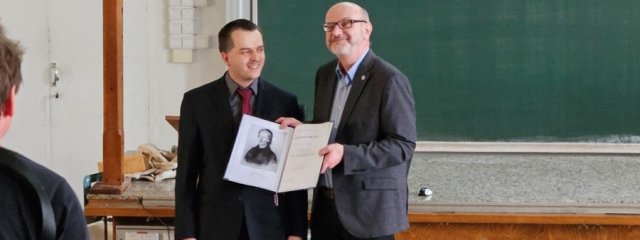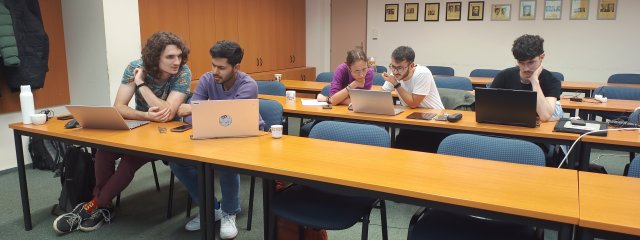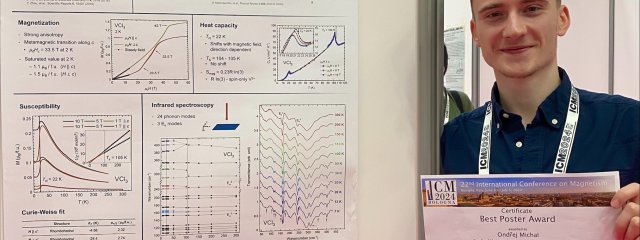News
The Bernard Bolzano Endowment Fund Prize was awarded to Michal Vališka on March 12, 2025, for his outstanding contributions in research of unconventional superconductor UTe₂. This recognition follows the publication of key findings in PNAS, Nature Communications, and other high-impact…
On Monday 27th January 2025, our PhD student Daniel Staško successfully defended his doctoral thesis, completing his study cascade at our department and faculty. His research path began in 2017 within the student faculty project and was followed by his…
A recent ACS Nano publication (featured on a cover) shows how assemblies of radical organic molecules on a superconducting surface can host distinct quantum states. The study demonstrates that varying molecular distance and orientation alters magnetic coupling, inducing transitions between…
Our recent paper published in the Proceedings of the National Academy of Sciences (PNAS), titled “Superconducting critical temperature elevated by intense magnetic fields,” explores how intense magnetic fields influence superconductivity in unconventional systems, shedding new light on the physics of…
Our department isn’t focused solely on basic research – we’re also dedicated to advanced automation that pushes the boundaries of science. The Charles Automata team has prepared an original Christmas video for you, in which a robot precisely arranges hundreds…
Our department in collaboration with Technical University of Munich organized the third edition of the Czech-Bavarian Mini-School on large research infrastructures and open data. Students acquired skills ranging from crystal growth to advanced neutron techniques and learned how to analyze…
Work of our valuable student and colleague Petr Král was awarded by the Charles University Grant Agency (GAUK) Board. His project “Pressure-driven structural and magnetic transformations in 221 intermetallics“ was evaluated as “Exceptionally good“ and moreover obtained a Honorable mention…
From September 26th to 28th, 2024, Prague hosted the Czech-Japanese Symposium on Advanced Multiscale Materials. This event took place as part of the AMULET project, funded by the OP JAK Excellent Research Program. The symposium played a crucial role in…
Our recent paper published in PNAS reveals a significantly revised high magnetic field superconducting phase diagram in the ultraclean limit of UTe2 single crystals. The study demonstrates a pronounced sensitivity of field-induced superconductivity to the presence of crystalline disorder.
Ondřej Michal, our Mgr. student, was awarded the Best Poster Award at the 22nd International Conference on Magnetism in Bologna for his poster titled "Magnetism and anisotropy of vdW antiferromagnet VCl3".











